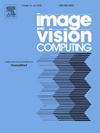Unmasking deepfakes: Eye blink pattern analysis using a hybrid LSTM and MLP-CNN model
IF 4.2
3区 计算机科学
Q2 COMPUTER SCIENCE, ARTIFICIAL INTELLIGENCE
引用次数: 0
Abstract
Recent progress in the field of computer vision incorporates robust tools for creating convincing deepfakes. Hence, the propagation of fake media may have detrimental effects on social communities, potentially tarnishing the reputation of individuals or groups. Furthermore, this phenomenon may manipulate public sentiments and skew opinions about the affected entities. Recent research determines Convolution Neural Networks (CNNs) as a viable solution for detecting deepfakes within the networks. However, existing techniques struggle to accurately capture the differences between frames in the collected media streams. To alleviate these limitations, our work proposes a new Deepfake detection approach using a hybrid model using the Multi-layer Perceptron Convolution Neural Network (MLP-CNN) model and LSTM (Long Short Term Memory). Our model has utilized Contrast Limited Adaptive Histogram Equalization (CLAHE) (Musa et al., 2018) approach to enhance the contrast of the image and later on applying Viola Jones Algorithm (VJA) (Paul et al., 2018) to the preprocessed image for detecting the face. The extracted features such as Improved eye blinking pattern detection (IEBPD), active shape model (ASM), face attributes, and eye attributes features along with the age and gender of the corresponding image are fed to the hybrid deepfake detection model that involves two classifiers MLP-CNN and LSTM model. The proposed model is trained with these features to detect the deepfake images proficiently. The experimentation demonstrates that our proposed hybrid model has been evaluated on two datasets, i.e. World Leader Dataset (WLDR) and the DeepfakeTIMIT Dataset. From the experimental results, it is affirmed that our proposed hybrid model outperforms existing approaches such as DeepVision, DNN (Deep Neutral Network), CNN (Convolution Neural Network), RNN (Recurrent Neural network), DeepMaxout, DBN (Deep Belief Networks), and Bi-GRU (Bi-Directional Gated Recurrent Unit).

求助全文
约1分钟内获得全文
求助全文
来源期刊

Image and Vision Computing
工程技术-工程:电子与电气
CiteScore
8.50
自引率
8.50%
发文量
143
审稿时长
7.8 months
期刊介绍:
Image and Vision Computing has as a primary aim the provision of an effective medium of interchange for the results of high quality theoretical and applied research fundamental to all aspects of image interpretation and computer vision. The journal publishes work that proposes new image interpretation and computer vision methodology or addresses the application of such methods to real world scenes. It seeks to strengthen a deeper understanding in the discipline by encouraging the quantitative comparison and performance evaluation of the proposed methodology. The coverage includes: image interpretation, scene modelling, object recognition and tracking, shape analysis, monitoring and surveillance, active vision and robotic systems, SLAM, biologically-inspired computer vision, motion analysis, stereo vision, document image understanding, character and handwritten text recognition, face and gesture recognition, biometrics, vision-based human-computer interaction, human activity and behavior understanding, data fusion from multiple sensor inputs, image databases.
 求助内容:
求助内容: 应助结果提醒方式:
应助结果提醒方式:


